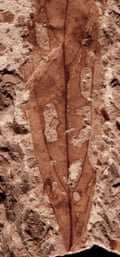Ecosystems in the southern hemisphere bounced back more than twice as quickly as those in the north after the devastating asteroid impact that annihilated the dinosaurs, research suggests.
A mass extinction was triggered 66 million years ago when a huge extraterrestrial rock crashed into the Earth. It produced the Chicxulub crater off the coast of Mexico as well as wiping out non-avian dinosaurs and a vast array of other species.
While previous evidence had suggested that the effects of the impact might have been less severe in the southern hemisphere, possibly because it provided a sort of refuge for species, the new research hints at a different explanation.
The lesser severity apparently seen in the southern hemisphere could be down to ecosystems recovering more quickly, researchers have found.
“This extinction event is very important – it is a one of the major extinctions in the history of the Earth,” said Michael Donovan of Pennsylvania State University, a co-author of the research published in the journal Nature Ecology & Evolution.
“The biodiversity patterns we see today, where things are living, may be related to what survived – so it is important to learn about what was happening around the world at this time,” he added.
To unpick why life in the southern hemisphere appeared to have fared better in the aftermath of the impact than in the north, scientists looked at the effect of the asteroid strike on leaf-eating insects. “We can learn a lot about what was happening at the base of the ecosystems by looking at what is happening to the plants and insects,” said Donovan.

The team, from the USA and Argentina, analysed 3,646 fossil leaves from Patagonia dating from around a million years before the impact to around four million years after the event. The analysis focused on comparing damage produced by the nibbling of insects to that previously seen in fossil leaves from the western interior of North America.
The North American leaves revealed that the diversity of damage, and therefore the variety of insects munching on the leaves, decreased dramatically at the time of the asteroid impact, with insects that fed on just a small selection of plants the worst hit. The data also showed that it took around nine million years for insect damage to recover to pre-impact levels.
Similar trends were seen in the fossil leaves from Patagonia. However, both before and after the asteroid impact the diversity of damage was higher, suggesting that Patagonia was rich in a huge variety of insects. What’s more, the diversity of the leaf damage returned to pre-impact levels more quickly than in North America, taking just four million years.
Careful analysis of details in the damage produced by insects that burrow between leaf layers - so-called leaf miners - offered further insights, revealing that even though the same type of insects existed in Patagonia before and after the impact, they were unlikely to be of the same species. “It makes it look like there is a lower extinction, but ... there’s actually new insects that were making this damage,” said Donovan.
The upshot, the authors conclude, is that the catastrophic impact that bumped off the dinosaurs had a huge and devastating effect on insect biodiversity in both hemispheres, but that ecosystems recovered more quickly in Patagonia than in the western interior of North America. Given the crucial role plant-eating insects in food chains it is feasible, Donovan adds, that “quicker recovery may be a general trend” across the southern hemisphere.
While it is not clear why ecosystems recovered faster in Patagonia, Donovan believes one factor could be its greater distance from the site of the asteroid strike, although he adds that is unlikely to be the full story.
Jason Hilton, a palaeobotanist from the University of Birmingham who was not involved in the research, said the work convincingly showed that diversity in the southern hemisphere was as severely affected by the mass extinction 66 million years ago as it was in North America, overturning the idea that the southern hemisphere was a refuge for species.
“Different locations were devastated by the impact event triggering mass extinction but its effects lasted longer in some places than others,” he said.

Comments (…)
Sign in or create your Guardian account to join the discussion